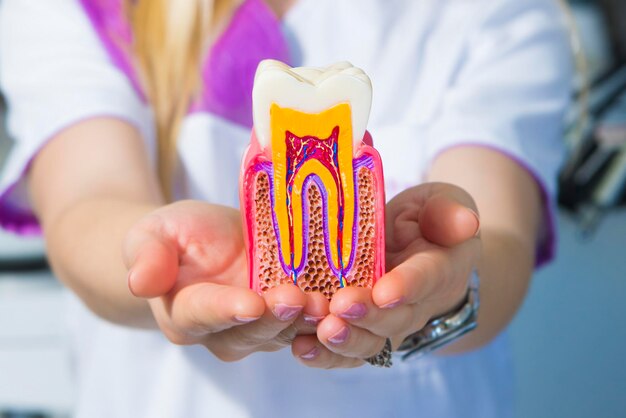
You should not ignore dental pain for too long. You need a dentist’s assistance to find a workable solution if one or more of your teeth hurt for an extended period. Depending on the severity of the issue, a root canal or tooth filling can restore your teeth to perfect health. When a tooth is broken or has dental decay, a filling or root canal procedure usually helps. What exactly happens during a root canal, and what is a tooth filling? And when is it necessary to fill a cavity? Keep reading this blog for further information if you have any queries or worries concerning dental procedures.
Difference Between A Root Canal & Dental Filling
At some point in their lives, most people will suffer from cavities. You can maintain healthy gums and teeth free of cavities by practicing good oral hygiene and scheduling routine checkups and professional dental cleanings at our dental office. However, in rare instances, the harm caused by a sizable cavity or the trauma from an accident may be too severe to be fixed by a conventional dental filling. A root canal can prevent extraction and chronic nerve damage in such cases.
Tooth Filling
A cavity is a hole caused by tooth decay. The surrounding teeth will continue to suffer if you do not address the cavity. Before filling a cavity with a specific substance, dentists wipe out the decay inside the cavity during a dental filling procedure. Metals like silver or mercury were initially used to treat dental cavities, but these have since been harmful to your health. We provide composite resin fillings as an alternative. In addition to being secure, this material is also tooth-colored to match your natural teeth. Small cavities with mild deterioration usually need a dental filling. The most typical sign that you need a filling is a basic toothache, but there are additional symptoms to watch out for. This involves tooth sensitivity, discomfort when biting or chewing, and a hole in the tooth that you can see and feel. Although tooth-colored fillings typically last a long time, regular dental exams are necessary to ensure the procedure continues to be successful.
Advantages Of Dental Fillings
Dental fillings will close holes and stop the spread of your cavities. Composite fillings also aid in strengthening your tooth’s structural integrity. The filling will provide the tooth with much-needed support rather than allowing the cavity to empty it. Since fillings are only temporary fixes, your tooth is not harmed in any way during its placement. One can use fillings to fix a broken tooth. Composite fillings are frequently used on teeth with significant discoloration and staining. This enhances their appearance.
Root Canal
Dental decay can occasionally harm a tooth’s pulp. Connective tissue, nerves, blood vessels, and other tissues that support the health of your teeth make up the pulp. It becomes a significant issue when the pulp is infected or gets swollen. A tooth infection could spread to nearby teeth and harm your general health. Root canal therapy may be required if the rotting tooth has reached the pulp and created an infection. A root canal may be necessary if you experience frequent or severe tooth pain. The chamber is extensively sterilized to get rid of any remaining material once the interior chamber of the tooth has been completely removed. The tooth is then sealed with a specific substance to stop the infection from returning. In many instances, we will construct a customized crown to cover the tooth and prevent future harm.
Advantages Of A Root Canal
One of the main advantages of root canal therapy is reducing discomfort and infection. Within a day or two of receiving treatment, patients can resume their daily activities since the root canal removes pressure caused by inflammation in the tooth pulp. A root canal procedure can last a lifetime without problems with appropriate dental maintenance. Additionally, a lot of dental insurance policies cover root canal therapies. Therefore, some advantages of undergoing a root canal include affordability of treatment. Bacterial accumulation in the pulp of diseased teeth can turn the teeth yellow, brown, or even black. Teeth whitening won’t help with this staining. But patients can conceal the discoloration and reclaim their natural smile by having the tooth covered with a crown. A result of a root canal is a crown that resembles a natural tooth and performs similarly. Finally, your dentist can prevent the infection from spreading to the jawbone or potentially the brain by treating the condition in the tooth with root canal therapy.
How To Know Which Procedure You Require?
You don’t have to decide whether a filling or a root canal is necessary if you experience pain, tooth sensitivity, or other symptoms. Visit our dental office for a check-up without any hesitation. We’ll go over your options with you and assist you in finding a method that works for you. Understanding your symptoms might give you more confidence, but we can also explain what’s happening with your teeth and suggest the best course of action.
You can get a root canal or a dental filling to cure rotting teeth. Even though treatment may cause some discomfort, it is preferable to deal with the issue as soon as possible before the damage results in further problems.
Related Articles
New Patients Are Welcome!




